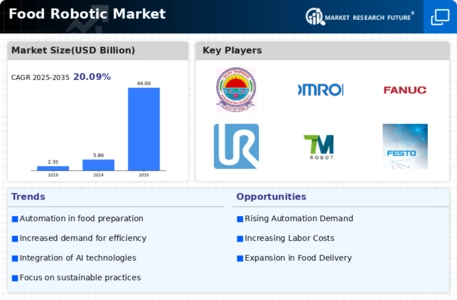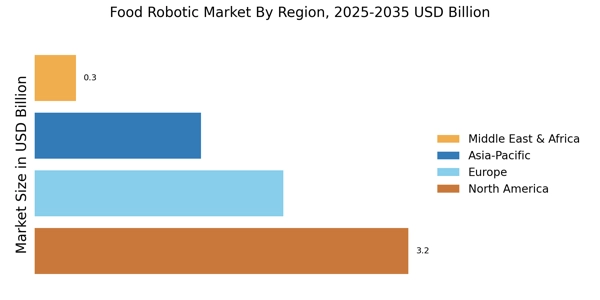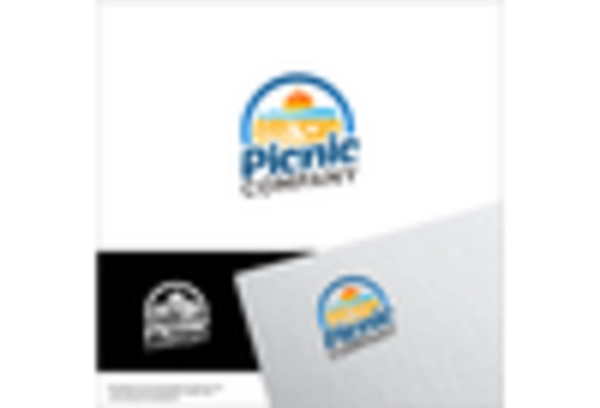Rising Labor Costs
The Food Robotic Market is experiencing a notable shift due to rising labor costs across various sectors. As wages increase, food businesses are compelled to seek automation solutions to maintain profitability. The integration of robotic systems in food processing and service can significantly reduce labor expenses, which is particularly appealing in regions where minimum wage laws are becoming more stringent. In fact, studies indicate that labor costs can account for up to 30% of total operational expenses in the food sector. Consequently, the adoption of robots is seen as a viable strategy to mitigate these costs while enhancing efficiency. This trend is likely to continue, as businesses increasingly recognize the long-term financial benefits of investing in robotic technology.
Sustainability Initiatives
Sustainability initiatives are increasingly shaping the Food Robotic Market as businesses strive to reduce their environmental impact. The integration of robotics can lead to more efficient resource utilization, such as minimizing food waste and optimizing energy consumption. For instance, robots can be programmed to use precise amounts of ingredients, thereby reducing excess and waste. Additionally, automated systems can operate with energy-efficient technologies, contributing to lower carbon footprints. Market analysis indicates that companies focusing on sustainability are likely to attract a growing segment of environmentally conscious consumers. As sustainability becomes a priority for food businesses, the demand for robotic solutions that support these initiatives is expected to expand, further driving growth in the food robotics sector.
Technological Advancements
Technological advancements play a crucial role in the evolution of the Food Robotic Market. Innovations in artificial intelligence, machine learning, and sensor technology are enabling robots to perform complex tasks with greater precision and reliability. For instance, robots can now handle delicate food items, ensuring quality and reducing waste. The market for food robotics is projected to grow at a compound annual growth rate of approximately 20% over the next five years, driven by these technological improvements. As robots become more capable and affordable, their adoption in food preparation, packaging, and delivery is expected to rise, further transforming the industry landscape.
Health and Safety Regulations
Health and safety regulations are becoming increasingly stringent in the food industry, driving the adoption of robotics within the Food Robotic Market. Robots can help ensure compliance with hygiene standards by minimizing human contact with food products, thereby reducing the risk of contamination. Automated systems are designed to operate in sterile environments, which is particularly beneficial in food processing and packaging. The implementation of robotic technology can also facilitate better tracking and monitoring of food safety protocols. As regulatory bodies continue to enforce stricter guidelines, the demand for robotic solutions that enhance safety and compliance is expected to rise, positioning robotics as a key player in the future of food safety.
Consumer Demand for Efficiency
The Food Robotic Market is significantly influenced by the growing consumer demand for efficiency and speed in food service. As consumers increasingly seek quick and convenient dining options, restaurants and food providers are turning to robotic solutions to meet these expectations. Robots can streamline operations, reduce wait times, and enhance customer satisfaction. For example, automated food delivery systems can ensure timely service, which is becoming a critical factor in consumer choice. This shift towards efficiency is reflected in market data, which suggests that businesses utilizing robotic systems can improve service speed by up to 50%. As a result, the demand for food robotics is likely to surge as companies strive to enhance their operational efficiency.


















Leave a Comment